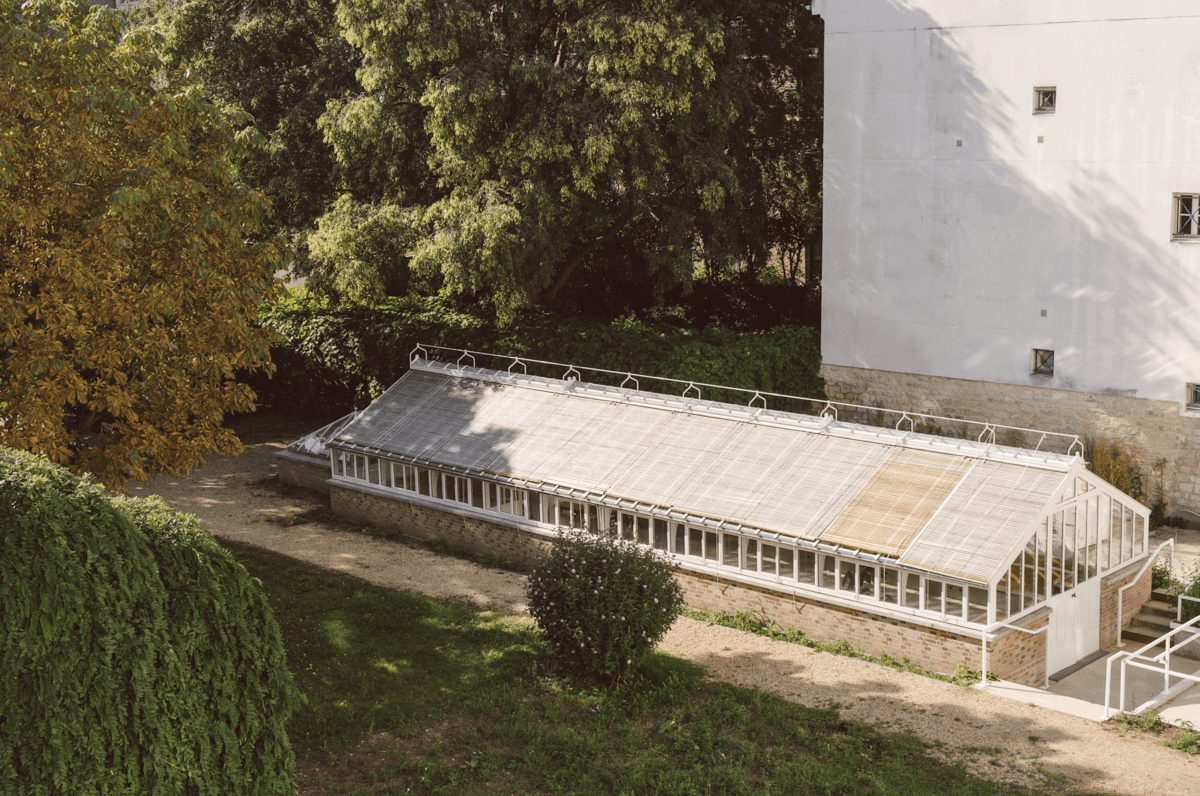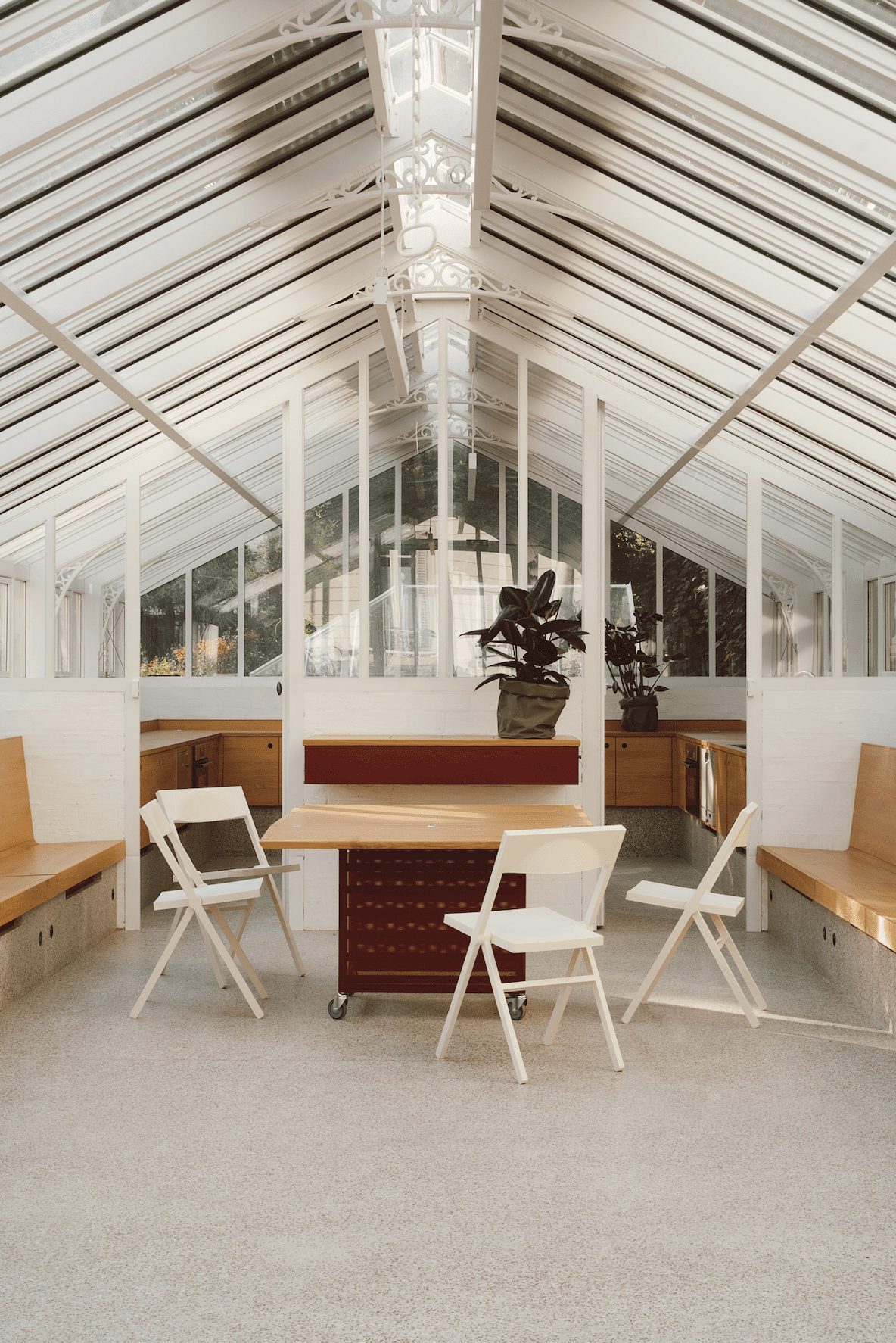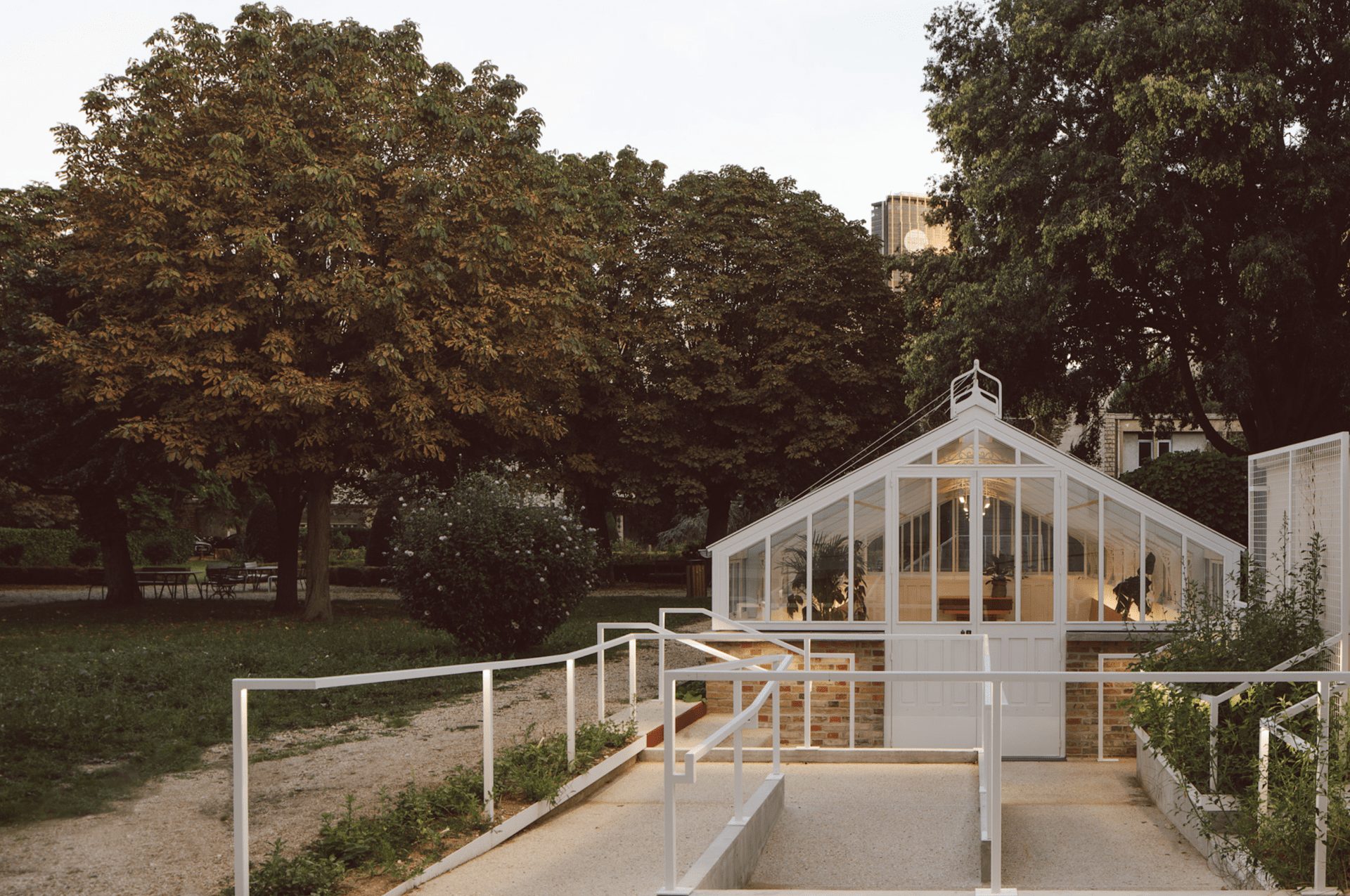
Located within the private garden of the Clinique Saint Jean de Dieu, the greenhouse dates back to the 18th century
Paris architecture and design studio Forme Architecture + Urbanisme were tasked with an unusual project – to bring back to life a former greenhouse, once used for growing medicinal plants, as well as fruit and vegetables, at the Saint Jean de Dieu clinic in the French capital.
The greenhouse, which was built in the 18th century in the verdant gardens of the Saint Jean de Dieu clinic, a private hospital in the 7th arrondissement, had remained in use until the 20th century but eventually fell into disrepair and was abandoned.

Both the lack of space in the clinic and the wish to see the building put to good use again encouraged the Saint Jean de Dieu Foundation to undertake the project. The foundation decided to convert the greenhouse into what it calls a ‘hospitality room’ to accommodate different activities for the clinic’s staff and patients.
The challenge faced by the restoration architects at Forme was to make the building usable all year round while working within the constraints of the listed building. Luckily, Forme’s architects, Clément Maitre and Robinson Neuville, are known for their sensitive approach to rehabilitating historic buildings and working with what’s already in place to create new uses.

The exterior of the greenhouse – known as the Villa Magallon (named after the clinic’s founder Brother Jean de Dieu de Magallon) – has been carefully restored, while the interiors have been thoroughly updated to allow for up 50 people to enjoy the space.
The architects installed a smart terrazzo floor, timber benches running along the length of the greenhouse, as well as retractable blinds for the glass roof to create shade and privacy. The hospitality room will be used by patients for yoga, workshops, support groups and as a space for relaxation and rehabilitation.

“It is not an annex of the clinic: here, the patient must feel at home,” says Brother Paul Marie Taufan. “That’s why we chose to call it a villa. It is a place to rebuild, to recharge, so that the patients realise that they are not alone, and that they can see themselves as a people and not as a disease.”
Images by Giaime Meloni
Enjoyed this article? Read more: 6 garden offices for working from home


























